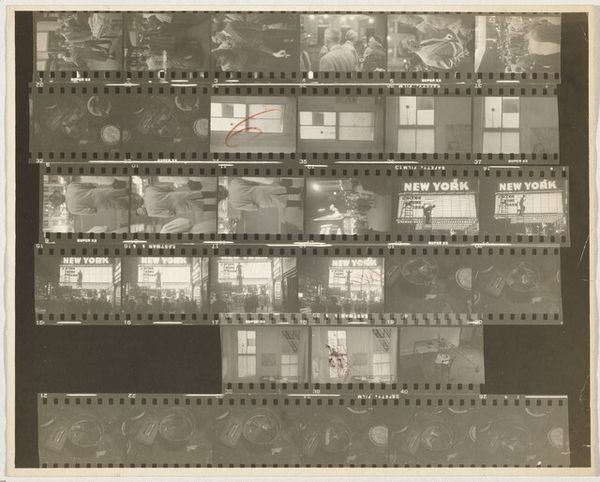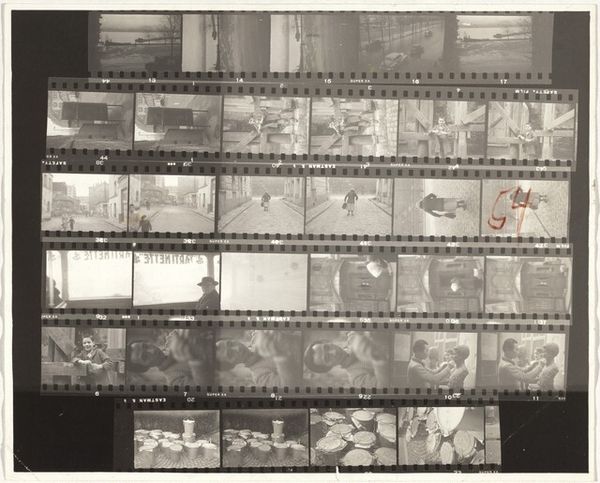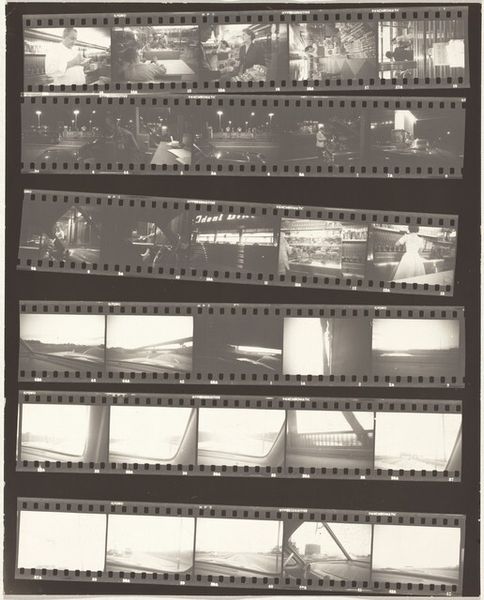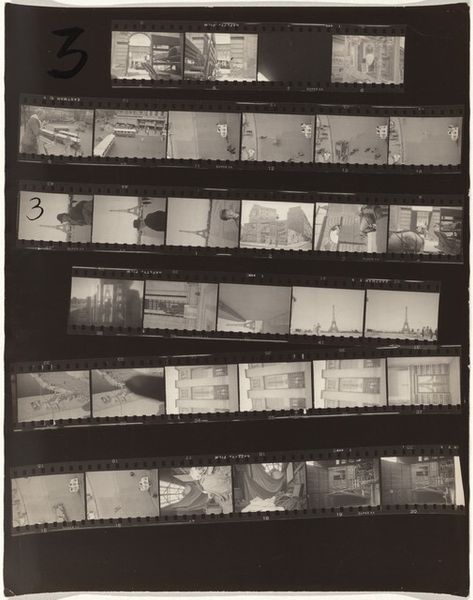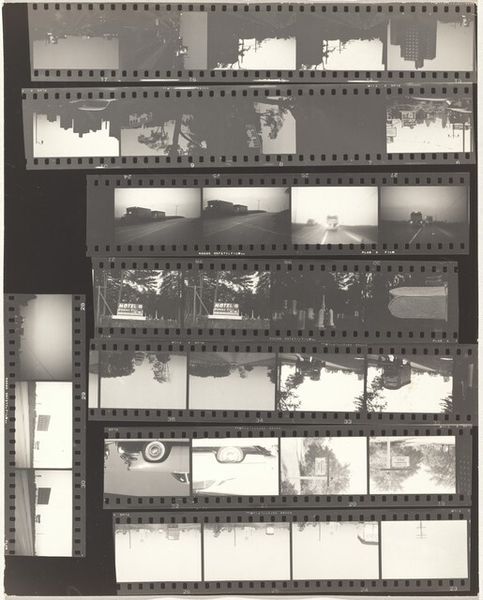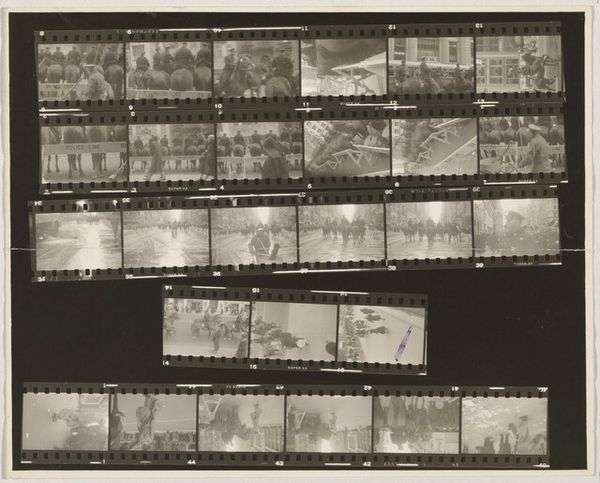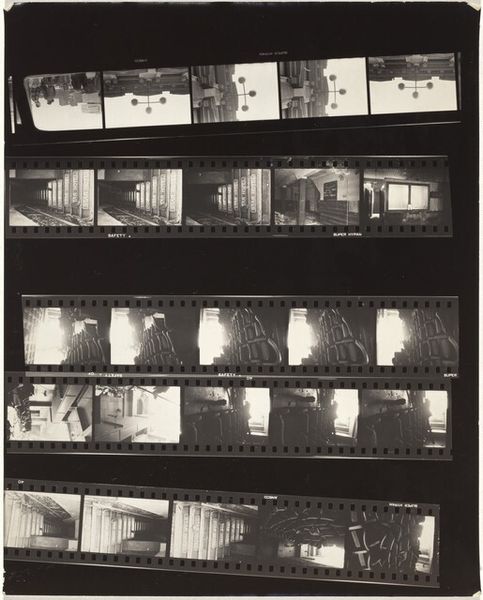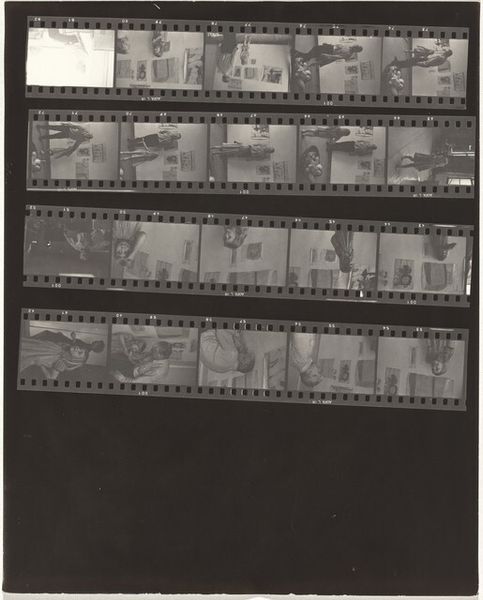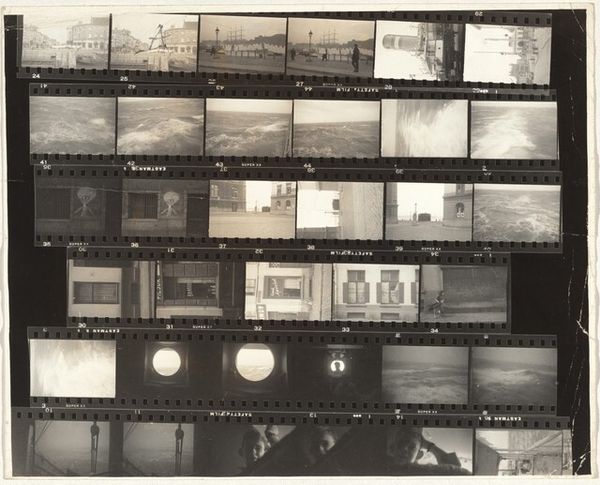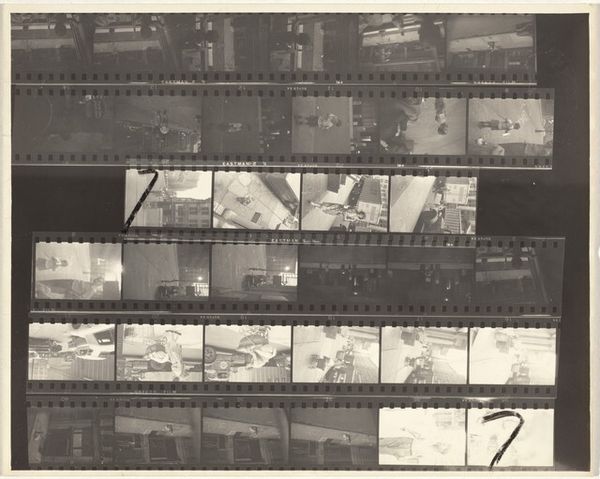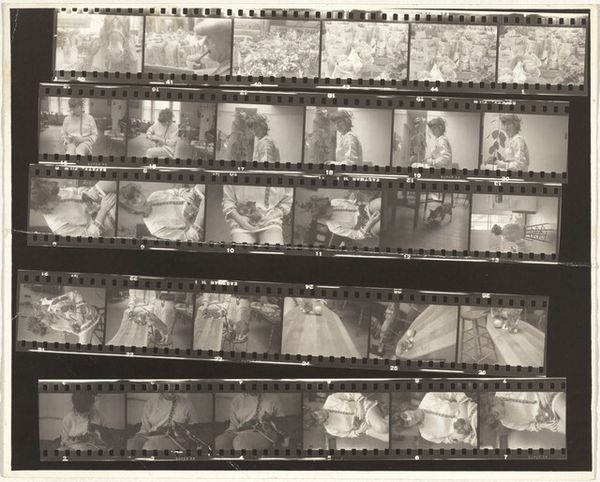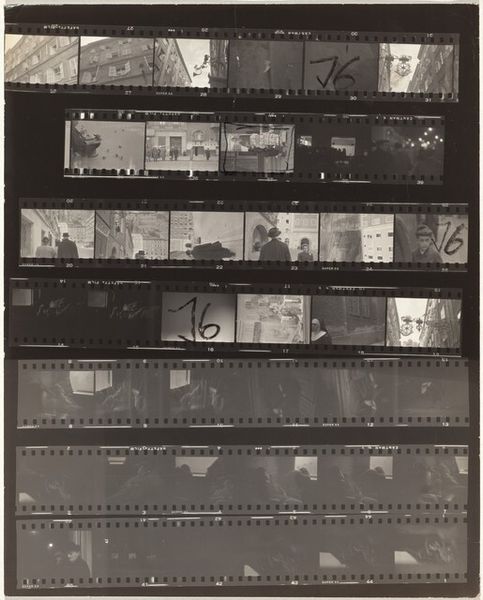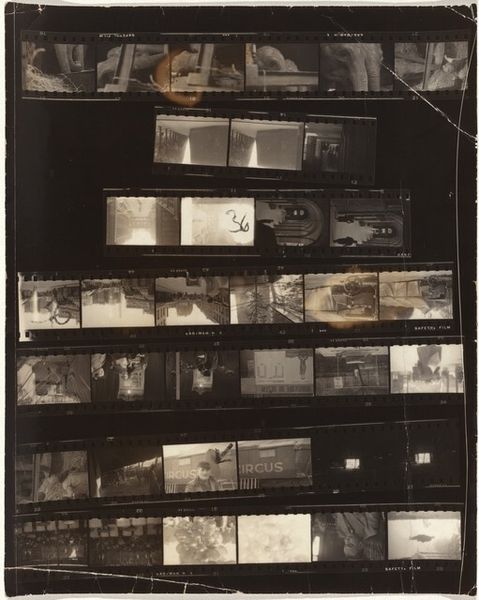
photography, gelatin-silver-print
#
abstract-expressionism
#
street-photography
#
photography
#
gelatin-silver-print
#
cityscape
#
modernism
Dimensions: overall: 20.3 x 25.3 cm (8 x 9 15/16 in.)
Copyright: National Gallery of Art: CC0 1.0
Editor: We're looking at "Early New York City no number" by Robert Frank, a gelatin-silver print from around 1948. It’s a contact sheet, full of small images. I’m struck by the grittiness, and the glimpse into everyday life. What do you see in this piece? Curator: I see a layered commentary on urban existence in post-war America. Frank presents a raw, unfiltered view. Look at the variety of shots – the elevated train tracks, storefronts, people on the street. How does this juxtaposition of images challenge the idealized image of American prosperity often presented at the time? Editor: It definitely feels more real than glamorous. Was he trying to critique something? Curator: Precisely! Consider Frank's own identity as a Swiss immigrant. He was an outsider looking in, observing the realities often hidden beneath the surface of the "American Dream." Notice how the composition feels fragmented. What might this suggest about his perception of the social and economic structures of New York City at the time? Editor: It makes the city feel busy, but also a little isolating. All these little vignettes, separated. Curator: And notice who's included and who isn't. Who has visibility in these images? Are marginalized communities represented, or are they conspicuously absent? Editor: That’s a really important question. I see mostly what seems like white, working-class life. Curator: This contact sheet then becomes a potent document, revealing both what was seen and what was overlooked. It is not merely a collection of snapshots, but a powerful statement on social inequality. Editor: I never would have thought about the photographer’s own background influencing his eye so much! It changes everything. Curator: Exactly. By acknowledging the context in which the work was produced, we gain a greater understanding of its enduring significance. Editor: Thank you; this was super helpful to me. I see now that analyzing its socio-political dimensions can help expose a much larger reality than expected!
Comments
No comments
Be the first to comment and join the conversation on the ultimate creative platform.
